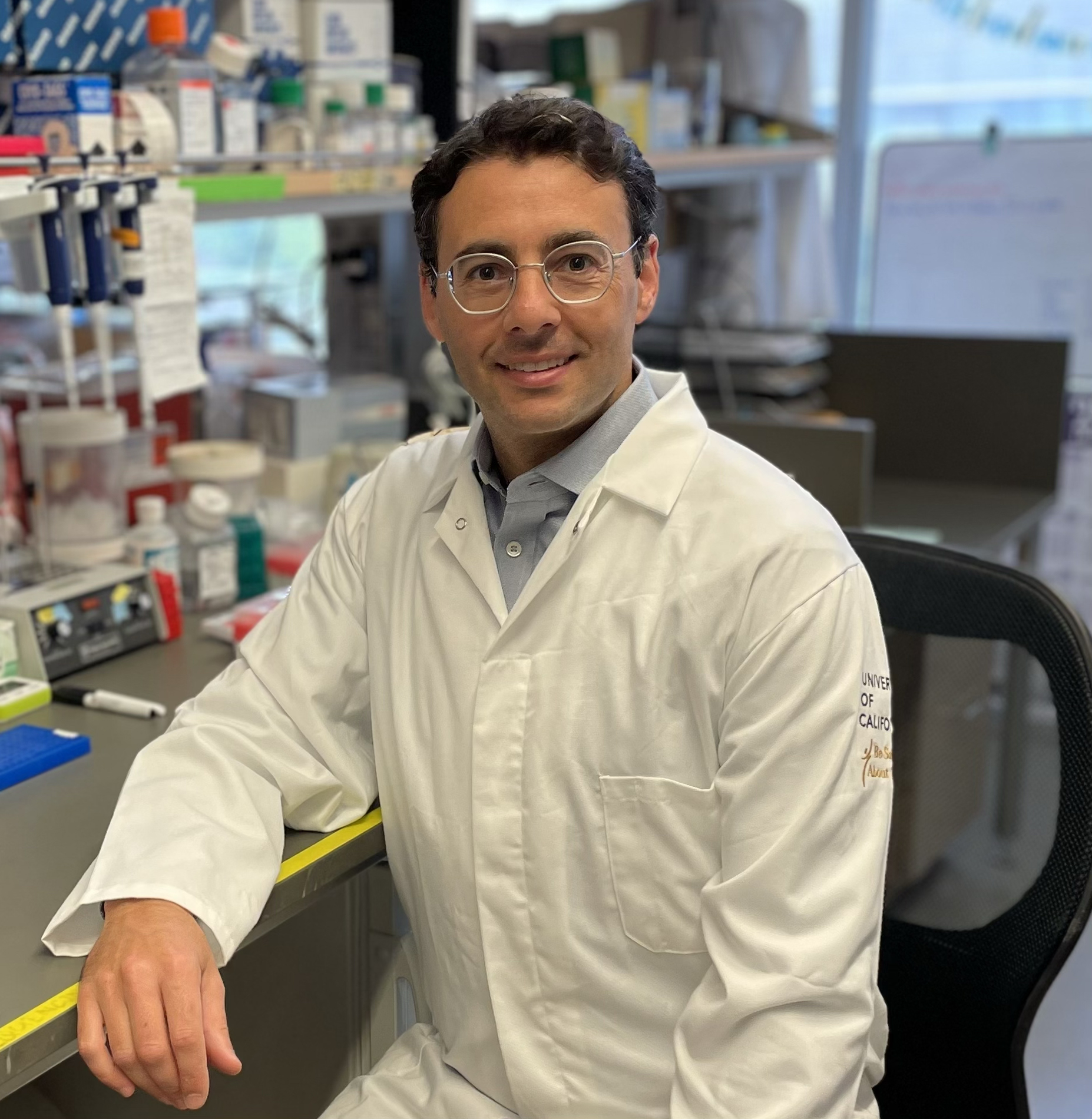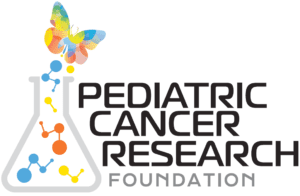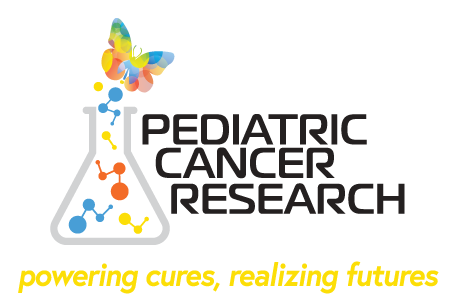For parents and caregivers who have children struggling with childhood Leukemia, nothing is more important than ensuring those children get the treatment they need. But what happens when the treatment itself is not only very intensive but also ineffective in 50 percent of cases?
That is the dilemma facing doctors treating patients with Juvenile Myelomonocytic Leukemia (JMML), a rare but aggressive form of blood cancer. Right now, the only known curative treatment for JMML is allogeneic hematopoietic stem cell transplantation (HSCT). However, as UCSF Benioff Children’s Hospital researcher Dr. Elliot Stieglitz notes, even though HSCT carries many short- and long-term side effects, it doesn’t always work.

“The transplant process is incredibly arduous. You have to get rid of most of the cells in the
“The transplant process is incredibly arduous. You
have to get rid of most of the cells in the patient’s
bone marrow and then replace them
with someone else’s and there are
myriad potential side effects.”
~ Dr. Elliot Stieglitz
“The transplant process is incredibly arduous. You have to get rid of most of the cells in the
Those side effects include an increased risk of life-threatening infections, an increased risk of liver disease, and even the possibility for patients to suffer graft-versus-host disease (GVHD).
If only there was a way to predict a patient’s responsiveness to HSCT treatment. Dr. Stieglitz has developed a test in his laboratory to attempt to do just that. This test will be used in a new clinical trial that he will conduct through the Therapeutic Advances in Childhood Leukemia and Lymphoma (TACL) Consortium.

About the Therapeutic Advances in Childhood Leukemia (TACL) Consortium
The Therapeutic Advances in Childhood Leukemia and Lymphoma (TACL) Consortium headquartered at Children’s Hospital Los Angeles is dedicated to first-in-pediatrics studies designed to accelerate the development of promising new therapies for hematologic maligiancnies of childhood. The TACL consortium is currently composed of 33 leading academic institutions, including UCSF Benioff Children’s Hospital, from the United States and Australia, all with extensive leukemia expertise and the necessary resources and trial infrastructure to conduct multi-center clinical trials. The TACL consortium is excited to conduct this new clinical trial, T2020-004: Risk stratified treatment for patients with newly diagnosed juvenile myelomonocytic leukemia: A Phase I/II non-randomized study of trametinib and azacitidine with or without chemotherapy (IND #164058).
Risk Stratification for Childhood Leukemia
Dr. Stieglitz’s clinical trial is anticipated to open in October 2023. Children with newly diagnosed JMML will be eligible to enroll. This trial will risk-stratify patients using a DNA methylation test developed by Dr. Stieglitz in collaboration with colleagues from Germany and Japan.
Risk stratification is a process by which doctors are able to anticipate different patients’ potential responsiveness to various forms of treatment. The need for research regarding risk stratification is especially high given the significant health risks and relatively high relapse rate after an intensive treatment like HSCT.
“This is the first time we will be able to risk-stratify patients with JMML and offer certain patients less intensive treatment and other patients more intensive treatment by analyzing their leukemia cells at diagnosis. In every clinical trial that has ever been conducted with this disease, all patients have received the same exact treatment, HSCT. For nearly every other pediatric cancer that would be unheard of, but until now we just didn’t have the biomarker we needed to tell us how to treat patients differently,” Dr. Stieglitz explains.
“One of the main goals of this trial is to eliminate the hardship of transplantation for patients who we suspect will be able to survive and thrive without such intensive treatment. Patients’ quality of life is really paramount in this trial.”

Testing New Treatments for JMML
In addition to utilizing DNA methylation testing to risk-stratify patients, Dr. Stieglitz’s clinical trial will also examine the effectiveness of a new treatment option that is significantly less intensive than HSCT.
“We just recently finished a clinical trial where we tested an oral medication called trametinib in patients who didn’t respond to conventional treatment,” Dr. Stieglitz adds. “Because the results were so promising, we are now moving that drug into the frontline setting for newly diagnosed patients. We are combining it with other medications that we already know work in this disease. It is the first time that this medication will be used in any pediatric leukemia at diagnosis.”
If utilizing risk stratification in conjunction with trametinib proves effective for lower-risk patients, it could change the way doctors treat JMML. Limiting HSCT primarily to those high-risk patients who are most likely to benefit from it could help improve the quality of life for children with JMML worldwide.

Building a Brighter Future for JMML Patients
For Dr. Stieglitz, progressing his research into this clinical trial has been a long and bumpy road. He knew the critical importance of significant funding support such as the National Institute of Health (NIH) Research Project Grant Program (e.g. R01) would be required to conduct this new study. He also understood that even the NIH grant application and review process would take time and resources.
“That’s where the Pediatric Cancer Research Foundation came in,” Dr. Stieglitz says. “In 2019 PCRF funded a grant to help establish our DNA methylation test. Next in 2021, we also needed seed funding to prove our concept before we could apply for National Cancer Institute (NCI) funding for the clinical trial. PCRF, as usual, was the first organization to step up to the plate and provide the financial resources needed to demonstrate the rationale of our concept.”
Dr. Stieglitz’s PCRF grant enabled him to complete additional experiments necessary to support the clinical trial design and to secure the prestigious NCI R37 award to conduct this important clinical trial through the TACL consortium. There is even an option to extend the grant by two additional years as a R37 award recipient, if certain milestones are met.
“The process has taken a long time,” Dr. Stieglitz says. “This is ten years of work from many individuals and institutions culminating in one clinical trial.”
JMML patients interested in participating in this clinical trial can visit the TACL website (www.tacl.us) to learn more about this clinical trial and discuss with their treating physicians. A full list of TACL consortium member institutions and their locations are available at the TACL website.
To help support the Pediatric Cancer Research Foundation as we strive to accelerate the advancement of pediatric cancer research, please visit our donations page.





